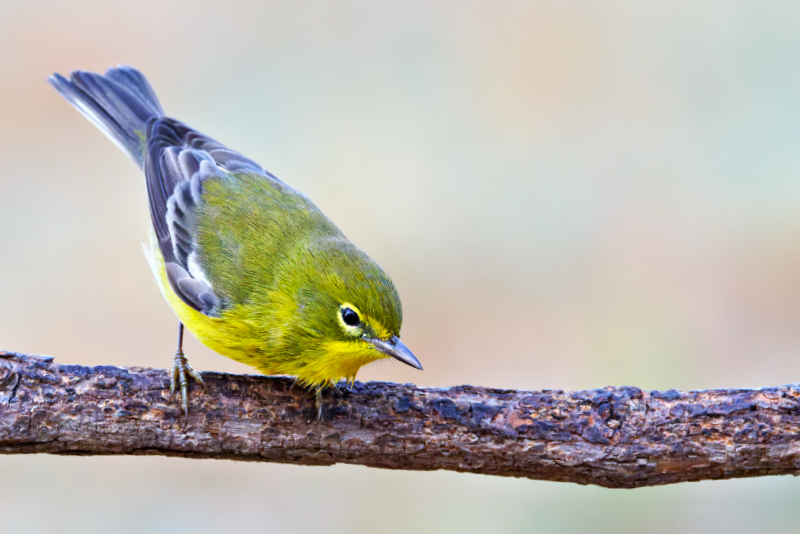With autumn fully settled here in Arkansas, I was thrilled to have a male Pine Warbler visit my bird feeder on November 1st, 2024. These vibrant little birds bring an extra spark to the late fall landscape, especially with their distinctive yellow-green coloring and bright eyes. I’ve shared about Pine Warblers in previous posts, but each sighting feels like a new experience.
Learn more about Pine Warblers in my post, “Pine Warbler: A Frequent Feeder Friend.”

The Unique Traits of Pine Warblers
Pine Warblers, scientifically known as Setophaga pinus, are closely tied to their namesake—the pine forests. Their habitat preference is clear, and they’re often identified by their distinct trill that echoes through Arkansas’ piney woods. Although these birds prefer pine forests, they’re also found in mixed habitats with deciduous trees, demonstrating their adaptability.
One of the unique features of Pine Warblers is their diet. Unlike many warblers, which primarily eat insects, Pine Warblers consume a variety of seeds, including pine seeds. This dietary flexibility is likely why they are one of the few warblers that frequent bird feeders, making them a delightful addition to backyard birdwatching.
For more on their feeding habits, check out my blog post, “The Suet-Loving Songbird: Pine Warblers in Arkansas.”
A Resilient and Resourceful Bird
Pine Warblers are resilient birds capable of raising up to three broods per season. Both parents are actively involved in feeding their young, who leave the nest after just about 10 days. The female, in particular, showcases remarkable nest-building skills, weaving a well-camouflaged structure high in a pine tree using pine needles, grass, twigs, and even spider silk.
Seeing this male Pine Warbler at my feeder was a reminder of the intricate connection these birds have with their environment. They represent the adaptability and resilience of wildlife, finding ways to thrive across different landscapes while staying closely linked to the forests they call home.
For additional insights on enjoying Pine Warblers in Arkansas, read “Enjoying Pine Warblers in Arkansas.”

Camera and Settings
First Photo:
- Date: 11/1/24
- Time: 8:53 AM
- Model: Canon EOS R5 Mark II
- Lens: Canon RF100-500 mm F4.5-7.1 L IS USM
- Focal Length: 500 mm
- ISO: 6400
- Aperture: f/8
- Shutter Speed: 1/800
- Exposure Compensation: +0.7
These moments with the Pine Warbler serve as a beautiful reminder of the wonders of nature, even as the season changes. It’s amazing to see how much joy a single bird can bring to a backyard, reminding us of the diversity and adaptability in our local wildlife.
